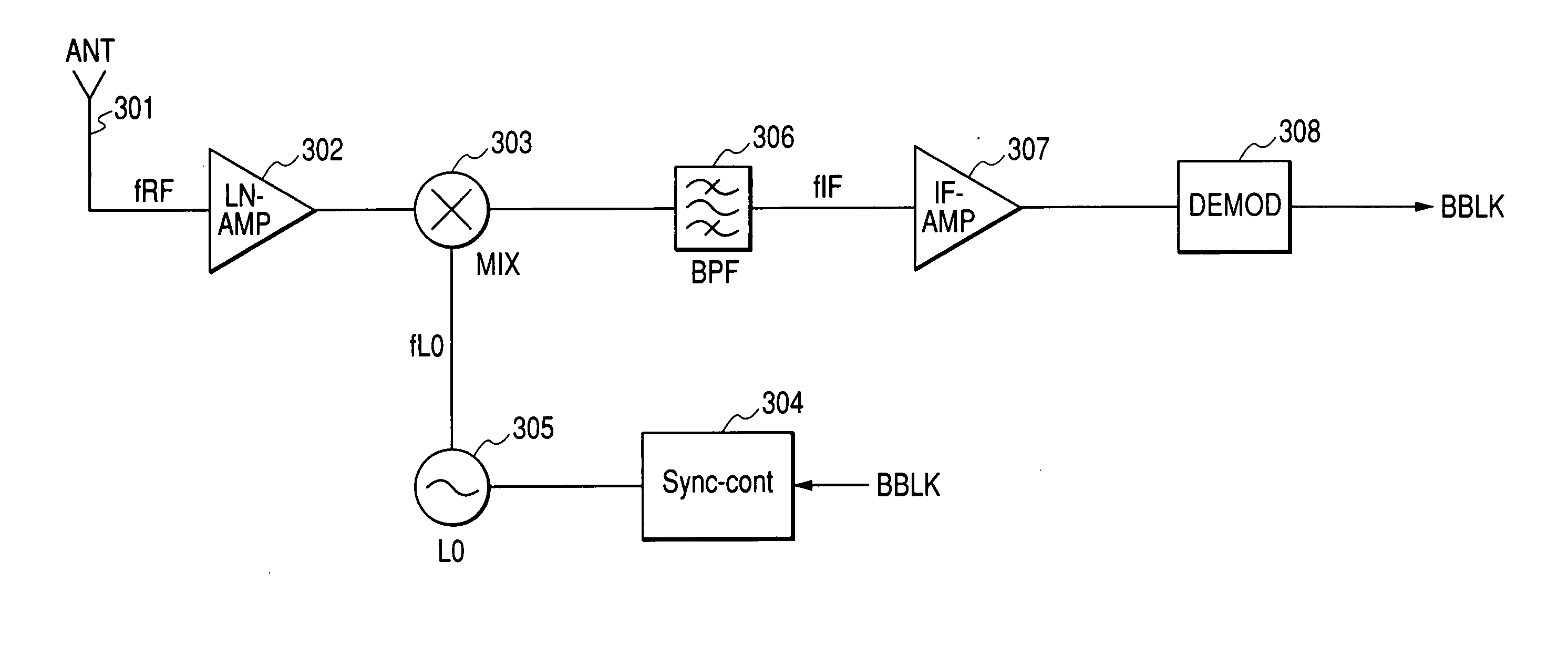Frequency generator and communication system using the same
a frequency generator and frequency technology, applied in the field of frequency generators and communication systems, can solve the problems of inability to correct alternating-current delay, oscillation frequency fluctuation due to temperature variation, etc., and achieve the effect of high-stable oscillation frequency
- Summary
- Abstract
- Description
- Claims
- Application Information
AI Technical Summary
Benefits of technology
Problems solved by technology
Method used
Image
Examples
embodiment 1
[0064] [Embodiment 1]
[0065]FIG. 3 is a block diagram showing a first embodiment of a frequency generator according to the present invention. The frequency generator of this embodiment has an amplifier 1, a buffer circuit (BFC) 2 feeding back an output of the amplifier 1 to its input, a reference voltage generator (REFV) 4, and a temperature coefficient converter (TCC) 5. In this embodiment, the temperature stabilizing circuit 6 of FIG. 2 is replaced with the reference voltage generator 4 outputting a voltage stable to temperature and having predetermined dependence, and the delay-time control circuit (DCONT) 7 is replaced with the temperature coefficient converter 5 converting the temperature dependence of an output voltage of the reference voltage generator 4 to predetermined temperature dependence. The same reference numerals in the following description indicate identical or similar construction parts.
[0066]FIG. 4 shows a block diagram of the frequency generator showing a constr...
embodiment 2
[0071] [Embodiment 2]
[0072]FIG. 6 is a circuit block diagram showing a second embodiment of a frequency generator according to the present invention. The frequency generator of this embodiment has a differential amplifier 1 having an LC resonance circuit 10 as a load, buffer circuits 21, 22 constructed by an emitter follower circuit feeding back each output of the differential amplifier 1 to each input, a reference voltage generator 4, and a temperature coefficient converter 5.
[0073] The resonance circuit 10 is a circuit in which inductors L1, L2 and variable capacitors C1, C2 such as variable capacitor diodes are connected in parallel. The differential amplifier 1 has a differential transistor pair Q11, Q12 of bipolar transistors and constant-current source I1.
[0074] A frequency control voltage is applied to frequency control terminal VCONT of the variable capacitors C1, C2 to control an oscillation frequency. The differential amplifier 1 amplifies signals inputted from the bases...
embodiment 3
[0089] [Embodiment 3]
[0090]FIG. 9 is a diagram showing a third embodiment of a frequency generator according to the present invention and is another construction example of the temperature coefficient converter 5 used in the frequency generator of the differential amplifier construction shown in FIG. 6. It is a circuit which can improve the noise characteristic of the temperature coefficient converter of FIG. 8 and obtain temperature dependence in a wide range.
[0091] The temperature coefficient converter of this embodiment has a collector output stage 51 receiving as an input an output 101 of the reference voltage generator, having NPN bipolar transistor Q10 and resistances R91, R92 and fetching an output from the collector of the transistor Q10, an emitter output stage 52 receiving as an input an output of the collector output stage 51, a collector output stage 53 receiving as an input an output of the emitter output stage 52, having NPN bipolar transistor Q30 and resistances R93,...
PUM
 Login to View More
Login to View More Abstract
Description
Claims
Application Information
 Login to View More
Login to View More - R&D
- Intellectual Property
- Life Sciences
- Materials
- Tech Scout
- Unparalleled Data Quality
- Higher Quality Content
- 60% Fewer Hallucinations
Browse by: Latest US Patents, China's latest patents, Technical Efficacy Thesaurus, Application Domain, Technology Topic, Popular Technical Reports.
© 2025 PatSnap. All rights reserved.Legal|Privacy policy|Modern Slavery Act Transparency Statement|Sitemap|About US| Contact US: help@patsnap.com



